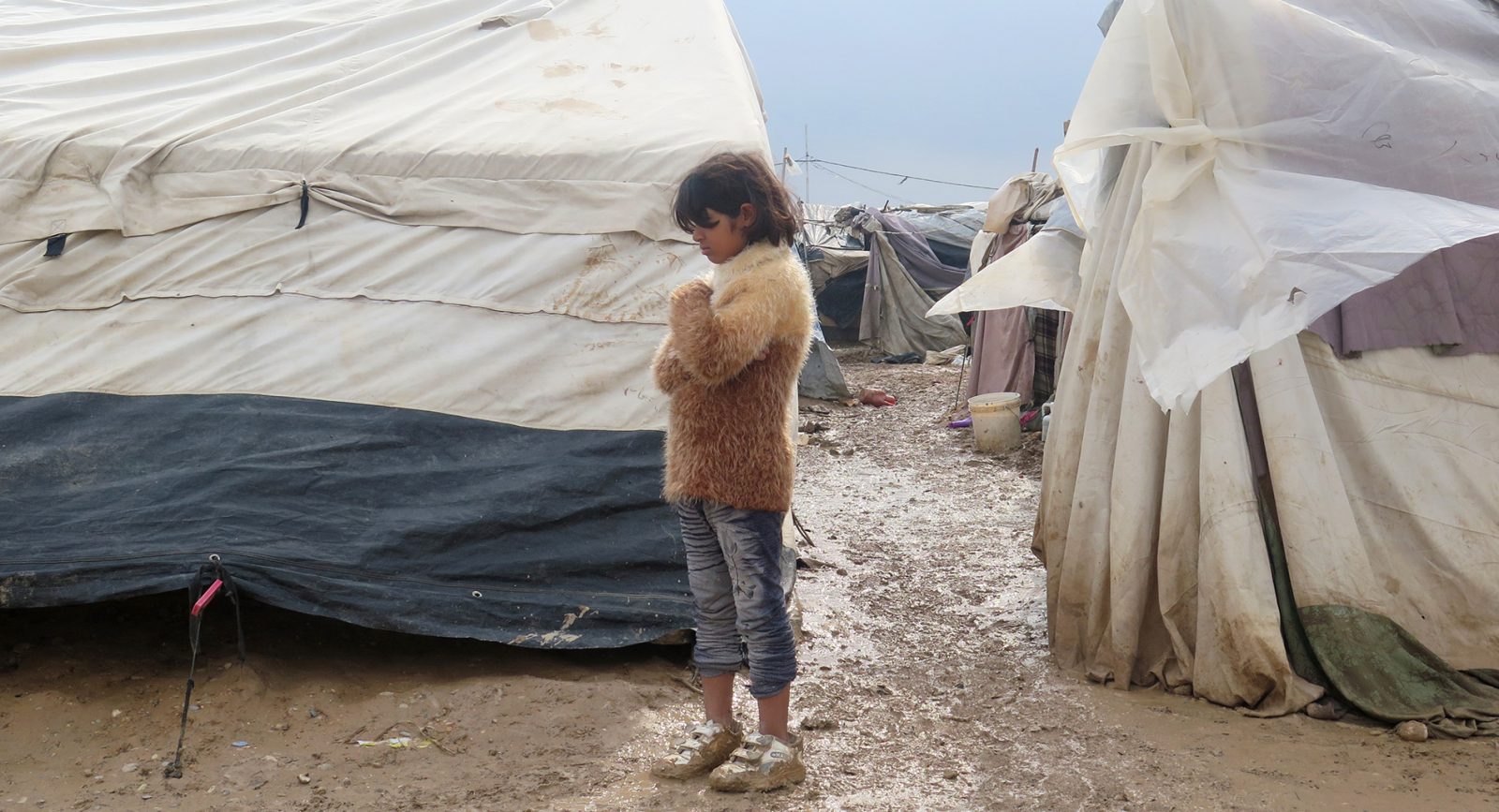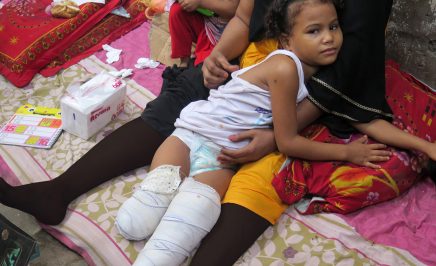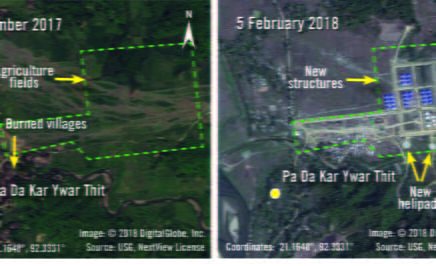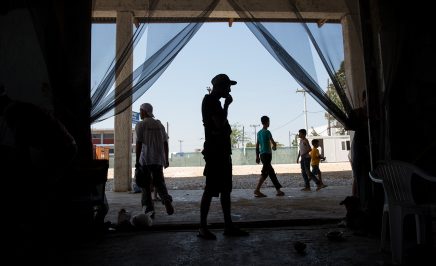Peshmerga forces from the Kurdistan Regional Government (KRG) and Kurdish militias in northern Iraq have bulldozed, blown up and burned down thousands of homes in an apparent effort to uproot Arab communities in revenge for their perceived support for the so-called Islamic State (IS).
Displacement of civilians
Our new report, Banished and dispossessed: Forced displacement and deliberate destruction in northern Iraq, is based on field investigation in 13 villages and towns and testimony gathered from more than 100 eyewitnesses and victims of forced displacement. It is corroborated by satellite imagery revealing evidence of widespread destruction carried out by Peshmerga forces, or in some cases Yezidi militias and Kurdish armed groups from Syria and Turkey operating in coordination with the Peshmerga.
As part of the US-led coalition in Iraq, Australia has provided some military support to Peshmerga forces to assist them to recapture areas controlled by IS. Australia has delivered resupply of small arms, ammunition and mortar rounds to KRG forces, and provided them with military advisers and direct air support.
“KRG forces appear to be spearheading a concerted campaign to forcibly displace Arab communities by destroying entire villages in areas they have recaptured from IS in northern Iraq. The forced displacement of civilians and the deliberate destruction of homes and property without military justification, may amount to war crimes,” said Donatella Rovera, Amnesty International’s Senior Crisis Response Advisor, who carried out the field research in northern Iraq.
Barred from returning to homes and villages
Arab residents who fled their homes are also barred by KRG forces from returning to recaptured areas.
“Tens of thousands of Arab civilians who were forced to flee their homes because of fighting are now struggling to survive in makeshift camps in desperate conditions. Many have lost their livelihoods and all their possessions and with their homes destroyed, they have nothing to return to. By barring the displaced from returning to their villages and destroying their homes KRG forces are further exacerbating their suffering,” Donatella Rovera said.
The report reveals evidence of forced displacement and large-scale destruction of homes in villages and towns in Ninewa, Kirkuk and Diyala governorates – which Peshmerga forces recaptured from IS between September 2014 and March 2015.
Though KRG officials have justified the displacement of Arab communities on grounds of security, it appears to be used to punish them for their perceived sympathies with IS, and to consolidate territorial gains in “disputed areas” which the KRG authorities have long claimed as rightfully theirs. This is part of a drive to reverse past abuses by the Saddam Hussein regime, which forcibly displaced Kurds and settled Arabs in these regions.
“KRG forces have a duty to bring to justice in fair trials individuals who are suspected of having aided and abetted IS crimes. But they must not punish entire communities for crimes perpetrated by some of their members or based on vague, discriminatory and unsubstantiated suspicions that they support IS,” Donatella Rovera.
Satellite imagery corroborates evidence of mass destruction
Thousands of residents of Arab villages near Jalawla, in the east of Diyala governorate, fled after IS fighters attacked the area in June 2014. More than a year after the area was recaptured by Peshmerga forces, residents are unable to return and the villages have been largely destroyed.
Maher Nubul, a father of 11 who left his village, Tabaj Hamid, in August 2014 said the whole village was “flattened” after it was recaptured by the Peshmerga four months later.
“All I know is that when the Peshmerga retook the village the houses were standing. We could not go back but could see it clearly from the distance. And later they bulldozed the village, I don’t know why. There is nothing left. They destroyed everything for no reason,” he said.
Amnesty International researchers who visited the area in November 2015 found that the village of Tabaj Hamid had been razed to the ground. Satellite images obtained by the organization also show that not a single structure is left standing.
In Jumeili, researchers found the main part of the village had been reduced to rubble. These findings are also supported by satellite imagery evidence showing 95% of all walls and low lying structures have been destroyed. Of the structures that remain the majority of rooftops and windows have been damaged or destroyed.
In both villages, satellite images also reveal possible bulldozer tracks near the piles of rubble and debris where buildings once stood.
Satellite images also provided evidence of large-scale destruction in two nearby villages, Bahiza and Tubaykh.

Repeated deliberate destruction of homes and property
Amnesty International also found evidence of repeated deliberate mass destruction of homes and property in Arab villages under Peshmerga control in Iraq’s north-western Ninewa governorate.
“After our homes were burned down we were ready to roll up our sleeves and repair them, but the Peshmerga did not allow us to go back and then the Yezidi militias came back and bulldozed and destroyed everything, including our orchards; they left nothing for us to salvage,” Ayub Salah, a resident of Sibaya, north-east of Mount Sinjar.
In Sibaya and four nearby Arab villages – Chiri, Sayir, Umm Khabari and Khazuqa – most of the houses were first burned down in January 2015 by members of Yezidi militias and fighters from Syrian and Turkish Kurdish armed groups operating in the Sinjar region. They were destroyed when the perpetrators returned with bulldozers five months later.
Amnesty International visited the area in November 2015 and found the villages largely destroyed. During a previous visit in April 2015, many houses had been ransacked and burned, but were still standing.
Satellite images obtained for four of the five villages also show them largely destroyed. In Sibaya, for example, more than 700 structures were damaged or destroyed out of an estimated total of 897 structures.
In a nearby Arab village, Barzanke, where virtually every single house had been destroyed, Peshmerga tried to blame the destruction on IS fighters, despite a lack of any evidence to support these claims and their own colleagues’ admission that they had destroyed the village to ensure that Arab residents would have nothing to return to.
On at least two occasions shortly after their arrival in destroyed villages, Amnesty International researchers were apprehended by Peshmerga, who escorted them out of the area and prevented them from taking photographs.
The KRG authorities have faced unprecedented humanitarian and security challenges, since hundreds of thousands of people sought refuge in areas under their control after IS captured large parts of northern Iraq in 2014. However, these difficult circumstances cannot excuse deliberate destruction and other serious abuses committed by KRG forces and other militias documented in this report.
“The KRG must immediately cease the unlawful destruction of civilian homes and property and provide full reparation to all civilians who have had their homes demolished or looted. Civilians who have been forcibly displaced must be allowed to return to their homes as soon as possible,” Donatella Rovera said.
“The Peshmerga must not allow armed groups and militias who are their allies in the fight against IS to commit such abuses. They have been in control of this area since they recaptured it from IS in December 2014 and have a responsibility to ensure the protection of all communities.”
“It is also critical that the international community – including members of the US-led coalition fighting IS such as the UK, Australia and Germany and others who are backing the Peshmerga forces – publicly condemn all such violations of international humanitarian law. They must also ensure that any assistance they are providing to the KRG is not fueling such abuses.”



